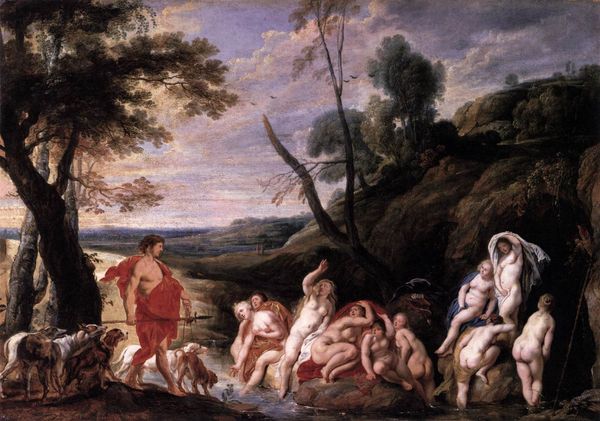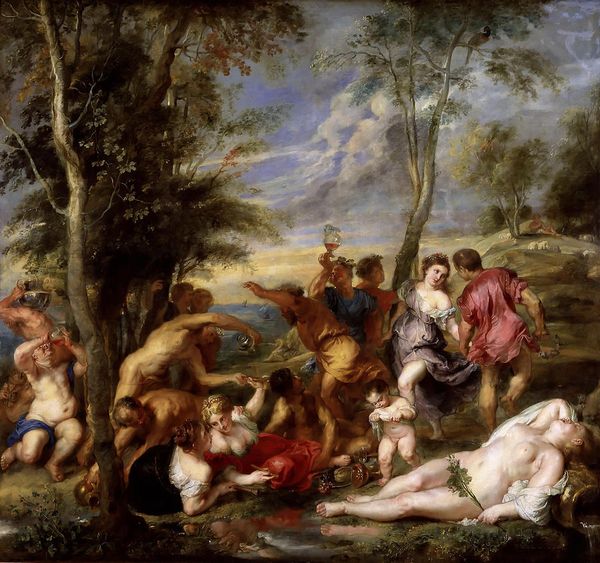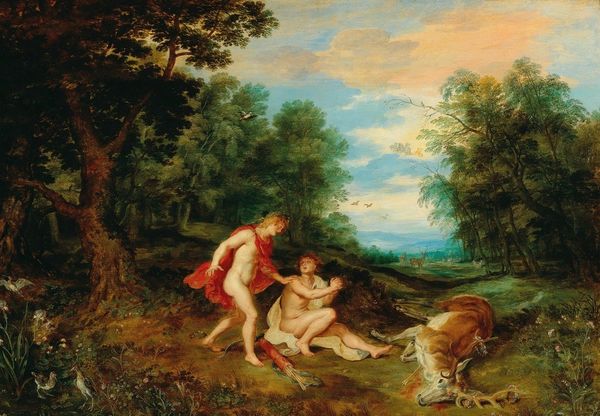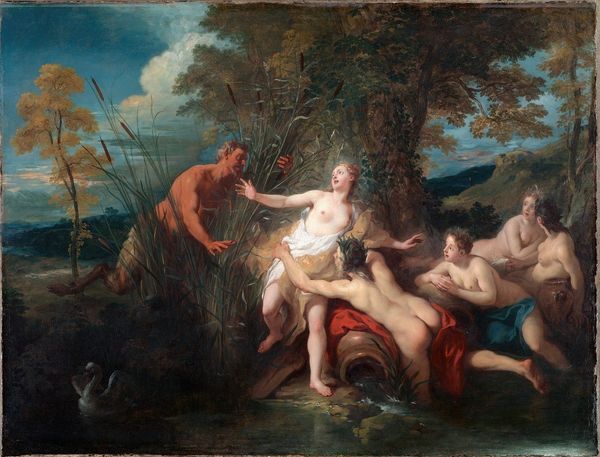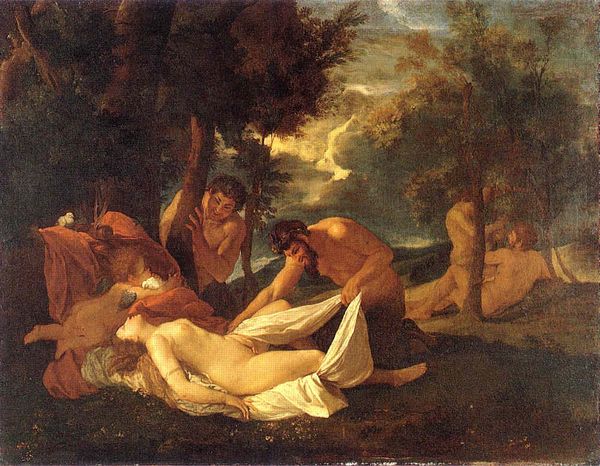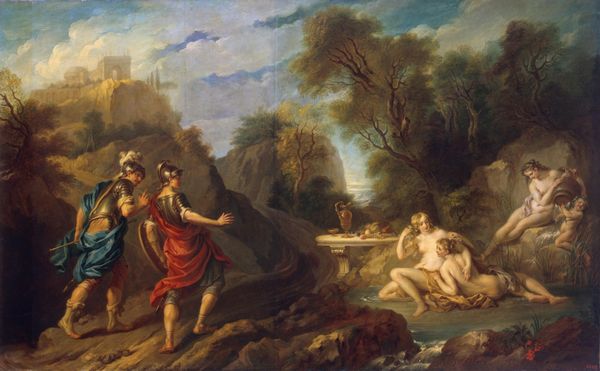
oil-paint
#
allegory
#
baroque
#
oil-paint
#
landscape
#
oil painting
#
roman-mythology
#
surrealism
#
mythology
#
nude
Dimensions: 22 x 28 cm
Copyright: Public domain
Curator: Welcome to the Budapest Museum of Fine Arts. We’re standing before Joachim Wtewael’s “The Judgment of Paris,” painted in 1605. What are your initial thoughts? Editor: It feels unexpectedly... restrained for such a charged mythological subject. The light is cool, and the overall composition, while busy, has a somewhat muted effect. Curator: Exactly. It's crucial to remember the cultural and political context. Wtewael, as a Northern Mannerist, often engaged with mythological narratives as allegories. This particular painting reflects not just the beauty contest but also explores themes of choice, destiny, and, dare I say, patriarchal expectations imposed on goddesses. Editor: I see what you mean. The figures themselves, while classically rendered, don't possess the idealized perfection we might expect. Instead, they convey a sense of almost tangible flesh, their postures creating complex relationships on the canvas. Look how Wtewael skillfully employs chiaroscuro to enhance volume and create contrast. Curator: And let's not forget the setting. This isn't just a backdrop; it's an active participant in the drama. The lush landscape contrasts sharply with the implications of Paris’ decision. This links it directly to contemporary issues of courtly love and gendered power dynamics within 17th-century Europe. Who is being judged and why is key. Editor: The dynamic diagonals of the composition guide your eye across the scene. Notice how the serpentine shapes of the bodies interact with the swirling foliage, and how this draws one’s eye to the very peculiar positioning of Mercury. Curator: Absolutely, and Wtewael subverts expectations. Where we might anticipate idealized forms and straightforward storytelling, we encounter ambiguity and layers of interpretation. The work encourages us to question the implications of beauty, choice, and the role of women in society, reflecting on beauty standards back then and continuing into current cultural landscapes. Editor: I had anticipated bombast, but I appreciate the artist's meticulous craftsmanship; the interplay of light and shadow generates volume that animates and engages. The technique transcends the source material. Curator: It provides a space for exploring deeper questions about identity, agency, and the narratives we inherit. It feels distinctly ahead of its time.
Comments
No comments
Be the first to comment and join the conversation on the ultimate creative platform.
